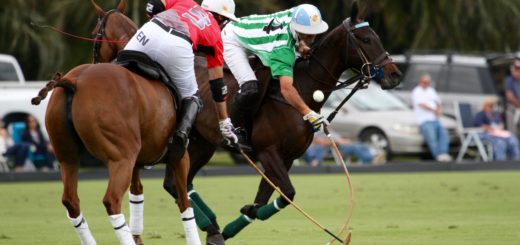How to Tack up a Horse – Polo Style

Tacking up a horse is one of the basic and main lessons you learn at Pony Club, but for us crazy people who decide to learn to ride a horse at an adult age, we don’t get to go to pony club and most often our horses are all tacked up, shiny and ready for us to hop on. As easy and convenient as that is, knowing how it’s done is actually quite important. If you do not know how the tack is supposed to be, how would you know if something is not right and that everything is safe?
Whenever I get the chance (and someone has the patience to show me how) to tack up a horse I take it. Not all tack is the same, there are actually a lot of variations, even within the same discipline, I have seen a few different types of polo tack, this blog post is based on the kind they have at Polo Valley.

For anyone out there who has not tacked up a horse here is a little rundown of how it goes.
First, you brush off the dirt, brushing with the hairs and flicking the brush at the end to get the dirt away. Then pick the hooves, making sure there aren’t big lumps of whatever stuck under there, which would cause discomfort and uneven treading for the horse.
The first thing that goes on is the saddle pad (some people don’t use saddle pads in tournaments, so if you see horses playing a match without a saddle pad on, it’s ok, they didn’t forget it). You want to place the pad very forward and then slide it back, so it goes with the hairs of the horse.

1st step – saddle pad, to protect the saddle from sweat mainly
Then the saddle. Making sure it is fairly forward, by the withers.
Then the girth is attached on one side.

Saddle and breast plate, which gets attached to either side of the saddle with help from the girth
Then the bridle and headgear goes on.
Slip the reins over the head of the horse and down its neck.
Then holding the top of the bridle and brow-band with your right hand and the bit between your thumb and forefinger on the left hand, gently push it into the horse’s mouth, they open up immediately and adjust the bit themselves (usually when accustomed to it).
Slide the ears through and buckle the chin strap so that it is snug but not tight, you should be able to put your hand under it.
Make sure the bit isn’t too tight or too loose, it should tug slightly at the corner of the mouth so it looks like the horse is smiling. Or as David showed me, you can put your finger inside the horse’s mouth and when you feel the front of its molar the bit should be halfway on your finger (yea I was not going to do that).

Some bridles have running reins, used as brakes when you want the horse to stop. Running reins are extra strong as they attach to the saddle, so when pulled back they will automatically collect the horse’s head and make it stop. The reins go flat from the outside in through the bit ring and then under everything and attached to the saddle. Other break reins are just attached to the ring on the bit.

A running rein is attached to the saddle/girth for extra brake power
Then the martingale (which is the wide leather strap running from under the horse’s chin and down between its forelegs and ensures the horse can’t jerk his head too far back and injure the rider) attaches to the girth and so does the other side of the breastplate. The girth is attached to the other side of the saddle and made quite tight, but not too tight.

Almost there.

Martingale goes from the horse’s chin down between its forelegs and attached to the girth. Then the girth is tightened and its all held in place.
The leg wraps you start by rolling it out a little bit, then very tightly around with a flap upwards, which is then folded down along the tendon.
Then with even space and fairly tight, they are wrapped around the leg until the bottom of the wrap reaches the bottom of the heel, then around tightly back up again. And finally tendon boots for extra protection.






Last is the tail. In a polo match, you would braid the tail and then “fold” it up and tape it three times.

First a plait or braid.

Then fold inwards

Then tape
When playing chukkers or stick and balling we use the Argentinian tail knot, which Annie is an expert.
I hope you found this blog post useful, comment below if you have comments and questions, I am only learning it myself. Subscribe to get future blogposts right in your inbox.







